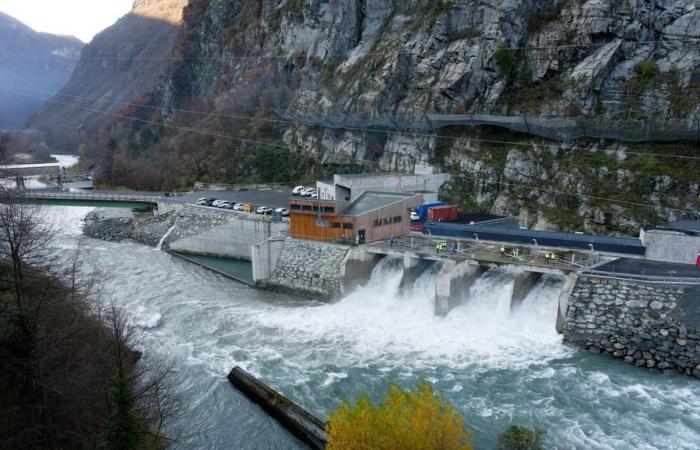
This is a record that was unthinkable a year ago. In 2023, France was struggling to recover from a triple energy crisis due to the war in Ukraine, a terrible drought for hydraulics and the unavailability of nuclear power plants. But everything changed in 2024: As of November 11, France has already exported a net more than 78 TWh of electricity to its European neighbors. This is more than in 2002, a record year with a score of 77 TWh. Better yet, by the end of the year, the net export balance will be 80 to 85 TWh depending on the weather and wind production, according to RTE. It could even reach 90 TWh, according to EDF.
Consumption at a low level
This performance, which should have a positive impact in billions of euros on the country's trade balance, shows “that our nuclear and renewable generation fleet is very competitive and that our power plants are called upon as soon as they are available”explains Thomas Veyrenc, the executive director of RTE in charge of strategy, economy and foresight. The offshore wind farms of Fécamp (operated by EDF) and Saint-Brieuc (Iberdrola) are fully operational. For its part, the nuclear fleet is again at 47 GW of availability, or more than 9 GW compared to 2023 and more than 15 GW compared to 2022. The reactors should even reach 50 GW in January 2025. “The effects of the stress corrosion crisis are receding. But the availability of the park remains lower than in the 2010s when it reached 55 GW.observes Thomas Veyrenc. In addition, after a year 2022 marked by drought, the worst since 1976, hydraulic power has also reached production records, with 62 TWh since the start of the year. “This allows us to approach the 2013 record”analyzes the RTE expert.
This export capacity is also explained by lower national demand. Consumption has continued to fall in 15 years, particularly since the fall of 2022, thanks to energy efficiency and sobriety efforts. And if this consumption is expected to rise again with the energy transition of industry and the development of data centers, it will not be right away. “We have elements to see that we are on a plateau, explains Thomas Veyrenc. Many industrial and digital projects have secured their access to the network. The consumption curve should start to rise again”. The expert nevertheless admits that he cannot say when.
Nuclear, renewables and even coal: all competitive
Exports are also driven by demand from our neighbors and market prices, around 100 euros per megawatt hour, which, climatically, make our last two coal-fired power plants competitive. While they were due to close in 2022, the crisis saved them and their operation is now authorized until 2027, according to the multiannual energy programming 2025-2035 (PPE3) in consultation. If GazelEnergie restarted the Saint-Avold power plant on November 12, awaiting its conversion project, “it’s not because RTE called himspecifies Thomas Veyrenc. It is the farmers who decide to produce in order to export”. When they have stocks, they take advantage of it.
Finally, with an additional 4 GW of solar, gas stocks 95% full in France and gas power plants fully available to ensure peak consumption, RTE only anticipates a “low risk on security of supply “, including in the event of a severe cold spell. It would take a major cold snap, a problem with the nuclear fleet, a long period of low wind and export limitations to darken the picture. “For winter 2024-2025, the outlook is the most favorable in ten years”summarizes Thomas Veyrenc. Finally some good news.
France





